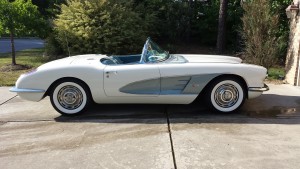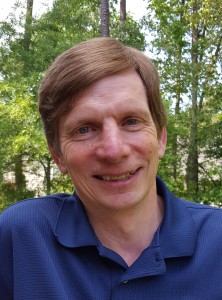Although he’s spent his entire career in computer science, Allan Porterfield entered Rice University in 1977 before CS was offered as a major. “The BS EE had a track which was basically a CS degree and I was on it,” he said. “In my senior year, Rice introduced a CS degree and presented the requirements. I was one course short. I needed a sophomore-level applied math course. My other option was a graduate-level course on SmallTalk. It sounded like more fun and I took it instead.”
Porterfield married classmate Carrie Gibbons one week after their graduation. Their mathematical sciences professor, Ken Kennedy, attended the wedding and had a vested interest in the bride. “Internships were uncommon then,” he said, “but Ken did hire one or two undergraduates to work for him each summer. Carrie worked for Ken the summer after her junior year and was his first undergrad researcher to not pursue graduate work. But my interactions with the people who would eventually form the core of the future CS department would eventually make it easier for me to go back for my PhD.”
After the wedding, Porterfield went to work as a programmer for National Supply Company for about two years. “I decided I didn’t like my job, my boss’s job, or his boss’s job and that it was time to go back to school and get another degree,” he said.
Asked about courses or moments that still stand out in his memory, Porterfield responded, “Programming in the basement of Herman Brown on projects from Dr. Hirschberg. Multiple courses from an Aloha-shirted Scott Warren. Sitting in a graduate level programming language course, with Keith Cooper, Linda Torczon, Randy Allen, Carrie Gibbons among others.”
He actually met Cooper and Torczon – now popular professors in the CS department – in his sophomore year. “I was hanging out in Wiess with the guys across the hall, a senior EE and a junior CE. The CE hung out with other CEs from Sid and cleaned dishes at the Jones Commons, between the two I met Keith and Linda.”
He renewed the friendships upon his return to Rice for a PhD. “Keith was done with his masters and PhD in mathematical sciences before I got back for grad school. He defended before I got there. Linda gave her defense in CS – the first defense in the new department – not long after got back.”
Porterfield’s application for the EE PhD program was declined, so he headed to Kennedy’s office to ask for advice. Kennedy, who was the first chair of the new CS department, invited Porterfield to join the first cohort of the PhD program. In the fall of 1983, that first graduate class included about 12 students like Mike Fagan, Carl Rosene, Vasanth Bala and “a guy named Chris Evert who kept a photo on his desk of his female cousin, tennis star Chris Evert,” he said with a laugh. “It was a big class because they needed us to get the program going and figured they would whittle us down as we went.”
Porterfield made steady progress for several years then went to his chair and asked if he could rush through his final requirements in nine months. “Ken looked at me and said, ‘Tell Carrie congratulations.’ and 15 months after that, we were moving to Seattle.” As he was wrapping up his PhD, Kennedy got him an interview with Burton Smith, co-founder of the Tera Computer Company. “Burton was in the very early stage of designing a new multi-threaded computer architecture and was vitally concerned that it be programmable. He believed that a co-design effort with hardware and a compiler team could achieve a system with a high degree of parallelism that could be programmed. He needed compiler writers who understood what could be done automatically and would tell him when ideas could not be used by a compiler.” Both Porterfield and his classmate David Callahan went to Tera to try to make a shared-memory architecture work, while their colleagues back at Rice started to work on Fortran-D, or how to make a distributed-memory system work.
Tera was renamed Cray Inc. after acquiring Cray Research from Silicon Graphics in 2000. Four years later, Porterfield grew disenchanted with the company’s new direction and looked for a new challenge. “I spent 18 years working for a start-up HPC computer manufacturer, doing compiler development and general network design in a fast-paced environment. Publication was not a priority.”
But he was asked to write a paper not long after he began working for the Renaissance Computing Institute (RENCI). Porterfield was concerned that his lack of previous publications might detract from his expertise. “But the people who read my first proposal had been going to Tera for quarterly reviews and knew what I had been doing. They realized my lack of a track record wasn’t because I hadn’t done work, but because I had been too busy to write it down.”

In addition to making programs go faster, Porterfield also enjoys driving a fast car –his ’59 Corvette.
Porterfield has been working with students, writing papers, and researching adaptive runtimes at RENCI, a computing research institute associated with UNC, for the last nine years. “I’ve never been driven by money,” he said. “Becoming a billionaire was not what I wanted. I wanted to make programs go fast, and that’s what I’ve been doing since grad school. It’s been an interesting intellectual challenge.”
Allan Porterfield completed his M.S. in CS in 1988 and his Ph.D. in 1989. His adviser was Ken Kennedy.

